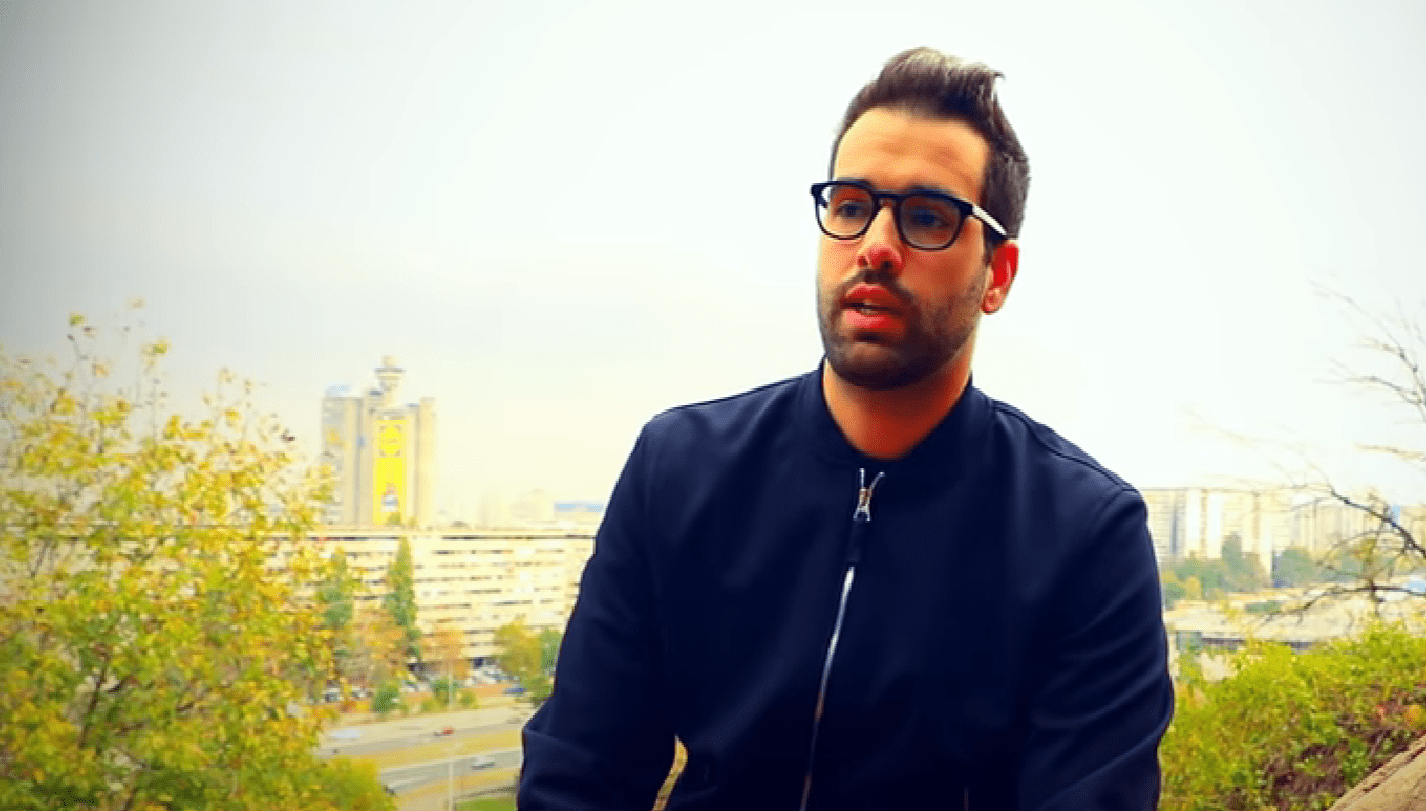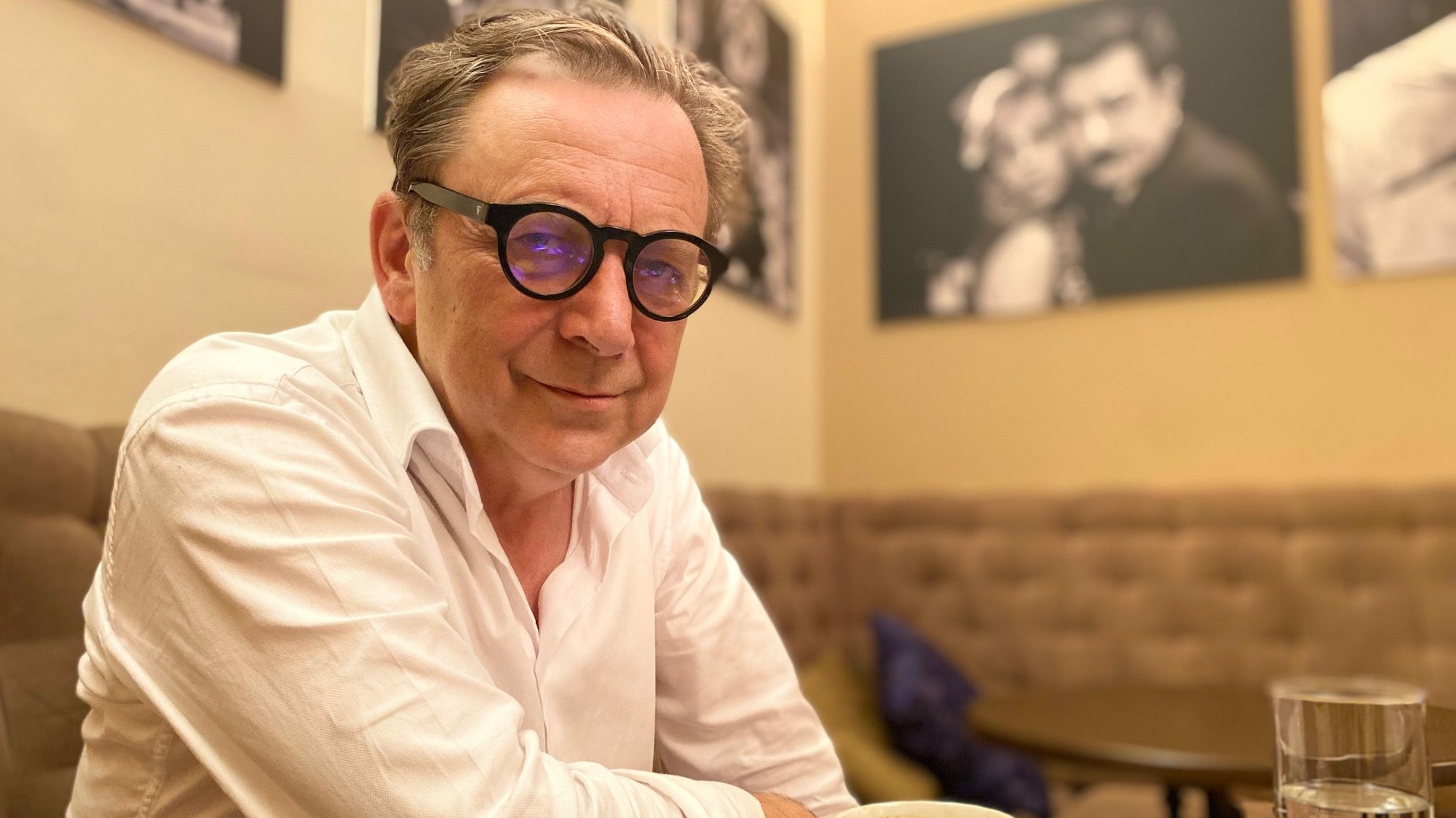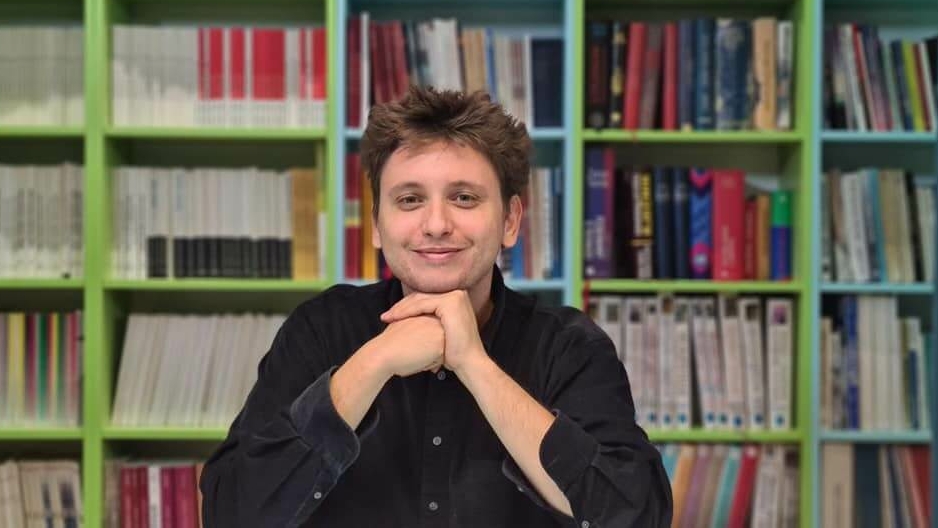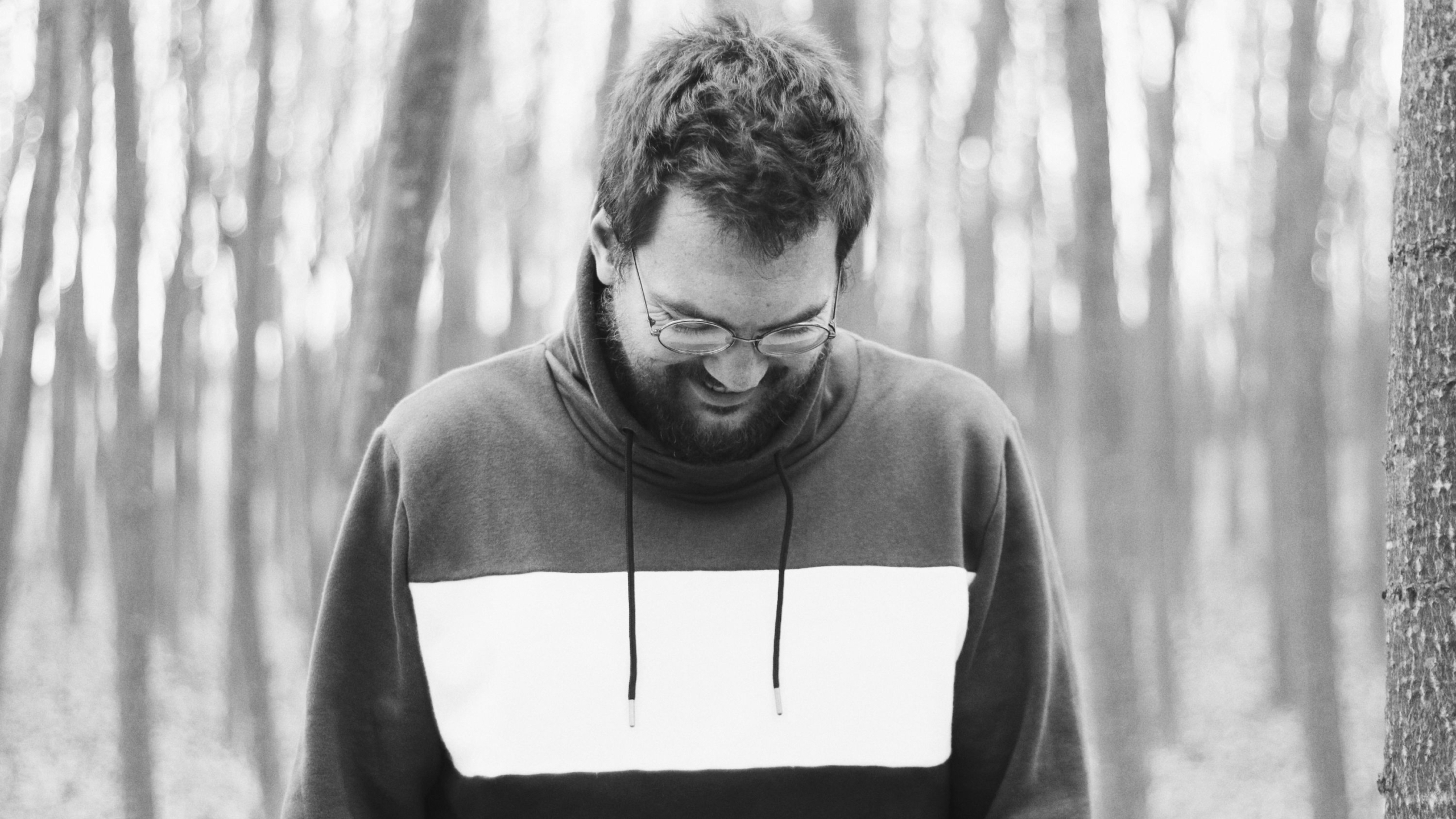His works adorn many public surfaces across Serbia. He installed a model of a crucified Jesus Christ covered in gold on a pole with surveillance cameras on an intersection in New Belgrade and called it New Faith. He frequently sets up installations at various locations in Belgrade; through them, he cleverly and critically reflects on contemporary social reality. He made the Golden Dumpster and the huge spoon which, inspired by the universal story about heaven and hell, he installed in Knez Mihailova Street and called The Spoon for the Hungry. His is the sculpture of a shining phallus, Keep Light, placed in front of the building of the City Assembly. He collected plastic bottles thrown into the river and used them to make a portrait of the TV presenter Jovan Memedović to raise awareness of the problem of river pollution. Andrej Josifovski, who uses the pseudonym Pijanista, is an architect by profession, an assistant professor at the Faculty of Architecture in Belgrade and a street artist. His works always attract public attention and, more importantly, make both fans of such artistic expression and ordinary passersby think. His murals enliven grey, old façades and draw attention to some real values represented by the portraits of artists, athletes and heroes of today. Many of them already enjoy cult status. Among the well-known are the portrait of Patriarch Pavle, Đura Jakšić, Dragan Jovanović, Lane Gutović, Nikola Jokić and the portrait of Novak Đoković on the clay court of a tennis club in Bežanijska Kosa. There is also the mural of Akiko, the heroine of the novel of the Leskovac writer Stefan Tićmi, the murals Swimmer, Diver, Message in a Bottle… His work is also covered by foreign media. He talked to P-portal about his inspiration, which drives his critical approach to society but is also drawn from some lasting values he visually reminds us of.
You combine an academic career with street art. How do you reconcile these two seemingly incompatible worlds?
The word “architecture” is composed of the word archi- (“first”, “old”) and tekton (“builder”, “creative artist”). Therefore, painting walls can be seen as tekton in a broader sense, especially since the look of the façade is a very important element of a building’s appearance.
You have painted over a hundred murals. Among them are greats of Serbian history and culture as well as some modern heroes. Who would you single out as especially important, and why is it important for them to be present in public spaces in this way?
We live in a very accelerated time when things move forward very fast, which, in a way, relativizes the role of those who laid the foundations and built our society. They must not be forgotten, for their deeds live through us. It seems to me that we now live as though everything starts with us, and that is where our problems come from. We certainly have role models to look up to, and that is why those we owe a debt of gratitude to are on the walls. Since we have no other recourse, the street is there to open our eyes.
Many appreciate not just your talent but also your courage to confront injustice and anomalies in society, even when they come from positions of power. Unfortunately, there are many phenomena in society that provoke your intervention and activism. What are you especially sensitive to?
We are witnessing a continuing collapse of institutions on which a civilized society is supposed to be based, which makes our lives look like reflections in a crooked mirror. The only rule is that there are no rules and that there are fewer and fewer of us, for, as the song says, “people are fleeing, people are fleeing, people are leaving…” I don’t believe that any normal person can watch that calmly.
Your work often aims to simply affirm certain values. We are referring to the portraits of some exceptional people. Who are these people?
They are people who dedicated their entire lives to establishing a healthy social order which is based on the rule of law, upholds moral principles, values knowledge and uplifts the spirit. Growing up, I was taught that their deeds were examples to follow.
You started collecting one dinar at a time for culture. How much have we all collected by now? Can culture survive on it?
Our culture is on life support, as the expression goes, but better days are seemingly ahead since fewer and fewer people are interested in what is happening to it. When no one is talking about it anymore, it will be a sign it has become completely stable and no longer needs any kind of support. It is a matter of the level of consciousness and enlightenment whether that will be seen as culture’s end or as the final cure for the need to be educated and spiritually uplifted, something that a lot of money has been wasted on.
The fight for culture, a healthy environment, a healthy society… Is there time for play with this unceasing struggle?
Life is at the same time a struggle and play, suffering and joy. They go together like sun and rain. Without suffering, there would be no joy. That is the way I see it.
Much of your work sends universal messages, clear and applicable in every part of the world. The Balkan Wheel of Life, however, is regional. Along with this wheel that crushes us all, what else do we have in common?
We share the yearning for a time eaten by the locusts that could have been ours.
Do people understand your work?
Like everything else about our lives, it is understandable, but it depends on us what we can and cannot accept.
What kind of work do you reject as an artist?
I don’t accept work where I can’t be creative and which won’t bear the stamp of my creative personality.
How polluted are Belgrade’s streets with hate speech? How common are such messages on façades, and who are they directed at? How do we fight that?
Expressions of hate are the consequences of deep divisions in our society, created, it seems, according to that old Roman recipe: divide et impera. We have to believe and fight for a better tomorrow because sacrifice is never in vain, however it may at first seem. There will always be someone after us, just as we came after someone. What life would that be if no one remembered us for anything good?
Tell us more about Runaway Festival. What is the concept, and what are the biggest successes of the festival?
Runaway Festival is conceived as a kind of art colony, an art district, a gathering of street artists and the popularization of this art form here.
Many things you do are avant-garde here but are well-established elsewhere in the world. What exactly are we behind in? And are we ahead of others in anything?
We are behind because our excuse is that there are those worse than us. When we start looking up to those better than us, we will finally start achieving our goals.
Can you reveal to the readers of P-portal what to expect from you next?
There are many things here that would fit a wall, but all in good time. Only heaven knows what comes next.
Translation from Croatian: Jelena Šimpraga








